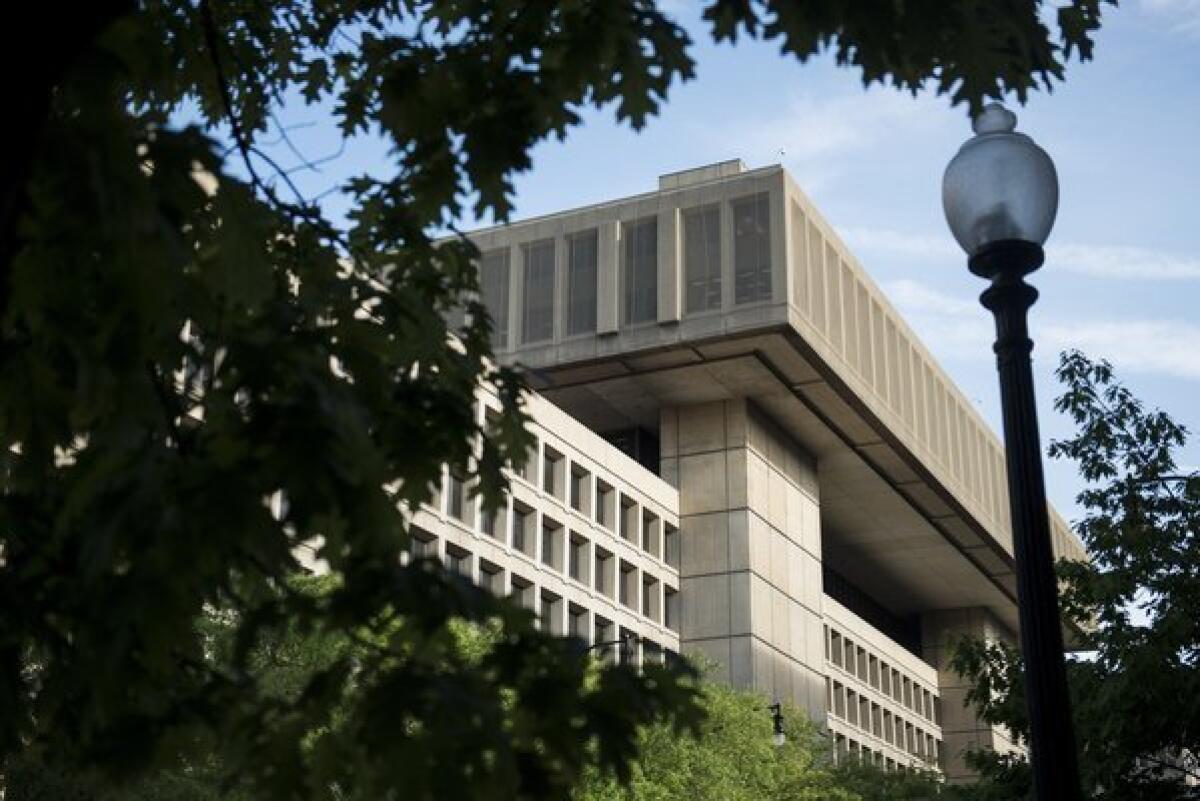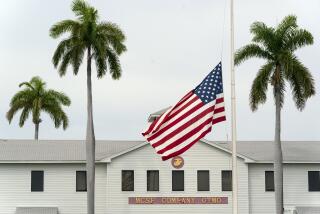Two ‘known or suspected’ terrorists vanished from witness program

- Share via
WASHINGTON — Two “known or suspected” terrorists who cooperated with the government and were placed in the Witness Security Program later were able to board airplanes and quietly vanish, the Justice Department’s inspector general concluded in a report that was highly critical of how the government handles some of its most dangerous witnesses.
Administration officials said Thursday that the pair left the country years ago and had since been located. But the office of the inspector general found that federal officials, primarily at the U.S. Marshals Service, which runs the program, had not been doing enough to monitor and handle the former terrorists. Justice Department officials said they had been making major improvements to tighten the operation.
The inspector general said some program participants were on the Transportation Security Administration’s no-fly list, “yet were allowed to fly on commercial flights,” apparently under their new identities, with the “knowledge and approval” of program officials.
Moreover, the inspector general said, the new identities would have allowed these participants to fly even without the approval of program officials because FBI and other authorities would not have known their real names.
The Justice Department said it was imposing a “highly restrictive travel policy that prohibits without exception” any participants with a no-fly status from traveling on commercial flights.
The inspector general found that the Marshals Service was not sharing case information of potential value with the FBI. One terrorist in the program was suspected of gathering information on the program on behalf of militant Muslim groups, and yet “we found no evidence that this information was shared with the FBI” for appropriate action.
In response, Justice Department officials said they had begun a “complete information sharing” effort not only with the FBI, but also with the National Joint Terrorism Task Force and other law enforcement groups.
Since 1971, when the program began, 8,400 witnesses and 9,900 family members and associates have been given witness protection status, with 700 active participants involved as of May of last year. They are relocated to new communities, given new names and provided financial assistance to restart their lives, all under a dark shroud of secrecy to ensure their safety.
Many have been star informants in organized crime trials, but a few provided crucial government testimony and evidence in terrorism cases such as the first World Trade Center bombing in 1993 and the Oklahoma City blast in 1995.
The number of former known or suspected terrorists entered into the program — most before the Sept. 11, 2001, attacks — “represents a fraction of 1% of the total” members, a Justice Department official said, and added that “to date, the FBI has not identified a national security threat tied to the participation of terrorism-linked witnesses” in the program.
But the inspector general, in the small, summary portion of the report made public, said that in July 2012, the Marshals Service stated “it was unable to locate two former participants identified as known or suspected terrorists, and that through its investigative efforts it has concluded that one individual was and the other individual was believed to be residing outside of the United States.”
A Justice Department official, speaking to reporters on background about the matter, said authorities knew where the two participants were living. “We know they left the country years ago, they left the program years ago, they have been accounted for,” he said. “There has been no information provided that they have ever returned to the United States.”
The inspector general listed 16 recommendations for improving the program, and the Justice Department said it already had implemented 15 and was working on the last, which called for a manual review of all of the more than 18,000 individual cases.
More to Read
Sign up for Essential California
The most important California stories and recommendations in your inbox every morning.
You may occasionally receive promotional content from the Los Angeles Times.














